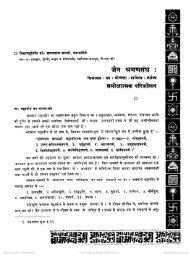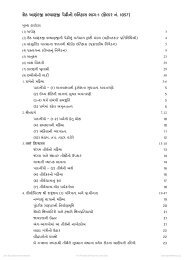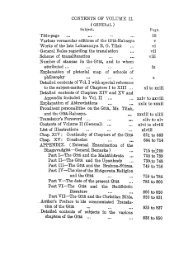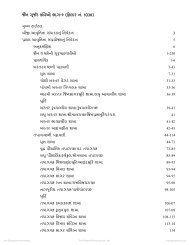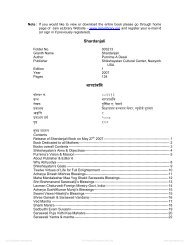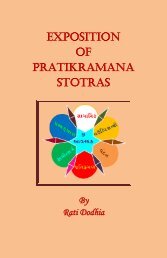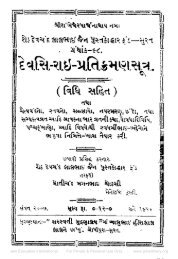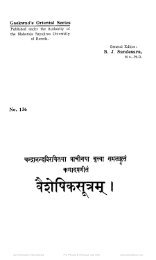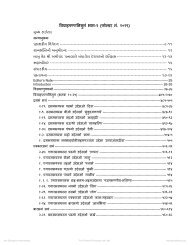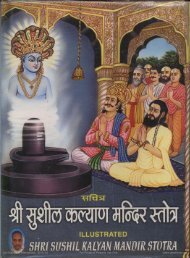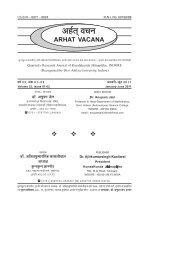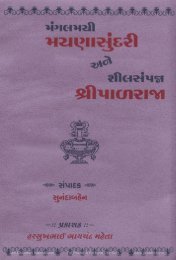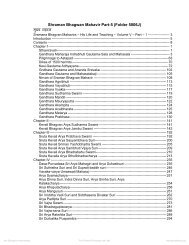Chapter - 08 Bon Po Religion - Jain Library
Chapter - 08 Bon Po Religion - Jain Library
Chapter - 08 Bon Po Religion - Jain Library
You also want an ePaper? Increase the reach of your titles
YUMPU automatically turns print PDFs into web optimized ePapers that Google loves.
Shri Ashtapad Maha Tirth - II<br />
10. There exist three principal biographies or hagiographies of Tonpa Shenrab in the <strong>Bon</strong><br />
tradition: 1. mDo 'dus or Dus gsum sangs-rgyas byung-khungs kyi mdo, 2. gZer-myig<br />
or 'Dus-pa rin-po-che'i rgyud gzer-myig, and 3. gZi-brjid or 'Dus-pa rin-po-che dri-ma<br />
med-pa gzi-brjid rab tu f bar-ba'i mdo.<br />
A summery of the hagiography of Tonpa Shenrab, drawn from the gZer-myig, will be<br />
found in Helmut Hoffman, The <strong>Religion</strong>s of Tibet, George Alien and Unwin, London<br />
1961, pp. 84-98. A brief version of the hagiography may be found in Richard Gard and<br />
Sangye Tandar, The Twelve Deeds: A Brief Life Story of Tonpa Shenrab, the Founder of the<br />
<strong>Bon</strong> <strong>Religion</strong>, LTW A, New Delhi 1995. Although the monastic career of Tonpa Shenrab<br />
in his later life bares many resemblences to the account of Shakyamuni Buddha's Great<br />
Renunciation and subsequent teaching activities, as found, for example, in the Lalitavistara,<br />
his life story is otherwise of an origin quite independent of anything remotely Indian<br />
Buddhist. Indeed, the noted Russian scholar Kuznetsov sees Tonpa Shenrab as being of<br />
Central Asian or Iranian origin. See B.I. Kuznetsov, "Who was the Founder of the <strong>Bon</strong><br />
<strong>Religion</strong>," in Tibet Journal, Vol. I, No.l, Dharamsala 1975. Certain contemporary Tibetan<br />
scholars see Tonpa Shenrab as being a native-born Tibetan, rather than a prince or priest<br />
coming from Central Asian origin. See Namkhai Norbu, The Necklace of gZi: A Cultural<br />
History of Tibet, L TW A, Dharamsala 1981. Karmay also appears to suggest this. See<br />
Samten G. Karmay, "A General Introduction to the History and Doctrines of <strong>Bon</strong>," in<br />
The Memoirs of the Research Department of the Toyo Bunko, No. 33, Tokyo 1975, pp.<br />
171-218. Lopon Tenzin Namdak, following <strong>Bon</strong> <strong>Po</strong> tradition, is adament in asserting that<br />
Tonpa Shenrab was not a Tibetan, but originated in 'Ol-mo lung-ring, which he identifies<br />
with Shambhala. In that case, 'Ol-mo lung-ring was a mystical domain and not a precise<br />
geographical location somewhere northwest of Tibet in historical times. On the significance<br />
of Ol-mo lung-ring and Shambhala, see Edwin Birnbaum,The Way to Shambhala: A Search<br />
for the Mythical Kingdom beyond the Himalayas, Anchor Press/ Doubleday, New York<br />
1980, pp. 12-13,44, 79-81, 102. On the signicance of mystical geography in general,<br />
see Mircea Eliade, The Sacred and the Profane: The Nature of <strong>Religion</strong>, Harcourt Brice<br />
& World, New York 1957, and also Henry Corbin, Spiritual Body and Celestial Earth,<br />
Princeton University Press, Princeton 1977.<br />
11. On the bard and the epic generally in the Tibetan tradition, see R.A. Stein, Tibetan<br />
Civilization, Faber and Faber, London 1972, pp. 272-281. Also see his more detailed study,<br />
Recherches sur 1'epopee et le barde au Tibet, Annales du Musee Guimet, Paris 1959.<br />
12. This does not mean that the Dalai Lama considers the <strong>Bon</strong> <strong>Po</strong>'s to be Buddhists. According to<br />
most Tibetan Lamas, the Buddhists follow chos and the <strong>Bon</strong> <strong>Po</strong>'s follow bon. Nevertheless,<br />
both Buddhists (chos-pa) and <strong>Bon</strong> <strong>Po</strong>'s are considered "Insiders" (nang-pa), as opposed to<br />
"Outsiders" or Non-Buddhists (phyi-pa), such as Hindus, <strong>Jain</strong>s, Muslims, and Christians.<br />
13. For example, see the Grub-mtha' legs bshad shel kyi me-long by Chos kyi nyi-ma dpal<br />
bzang-po (1674-1740). The section of this text dealing with <strong>Bon</strong> has been translated<br />
by Sarit Chandra Das in Contributions on the <strong>Religion</strong> and History of Tibet, Manjusri<br />
Publishing House, New Delhi 1970, pp. 1-19; reprinted trom Journal of the Asiatic Society<br />
of Bengal, 1881. The author, a Gelugpa scholar, distinguished three phases in the historical<br />
The <strong>Bon</strong> <strong>Po</strong> Traditions of Dzogchen<br />
400



